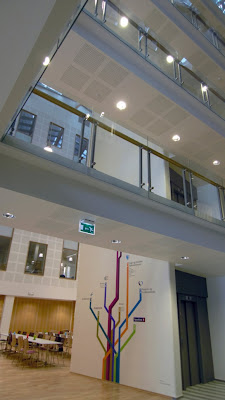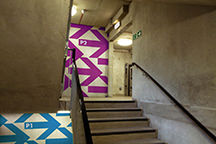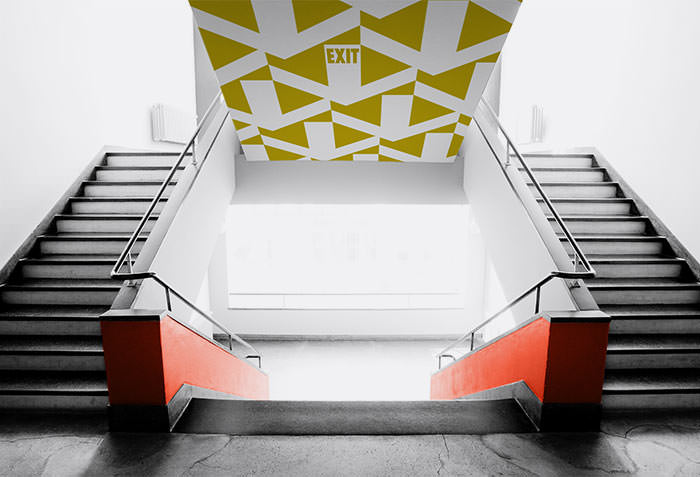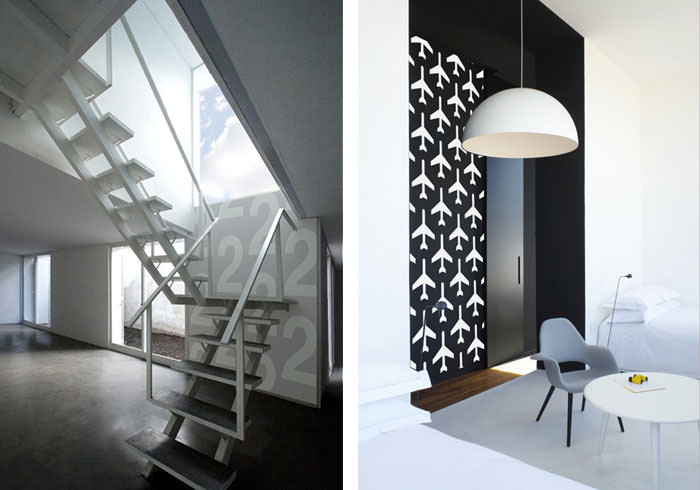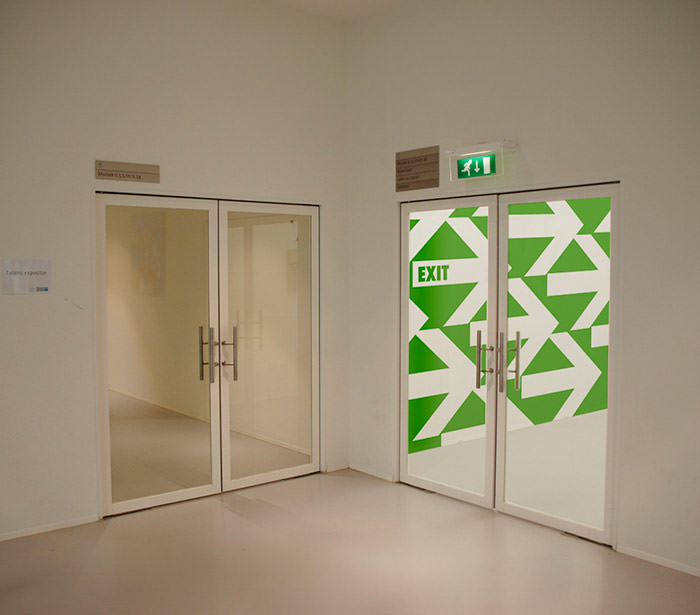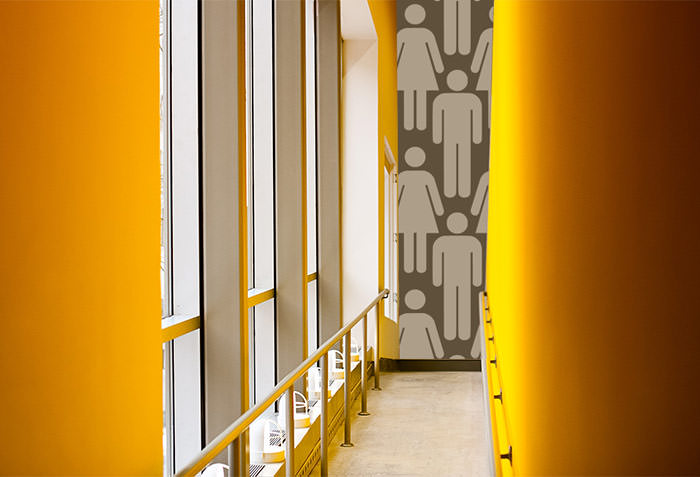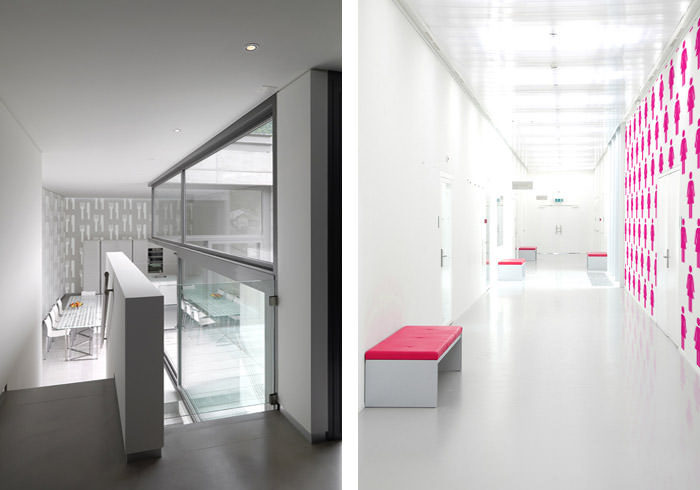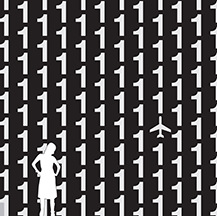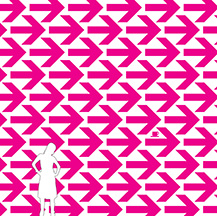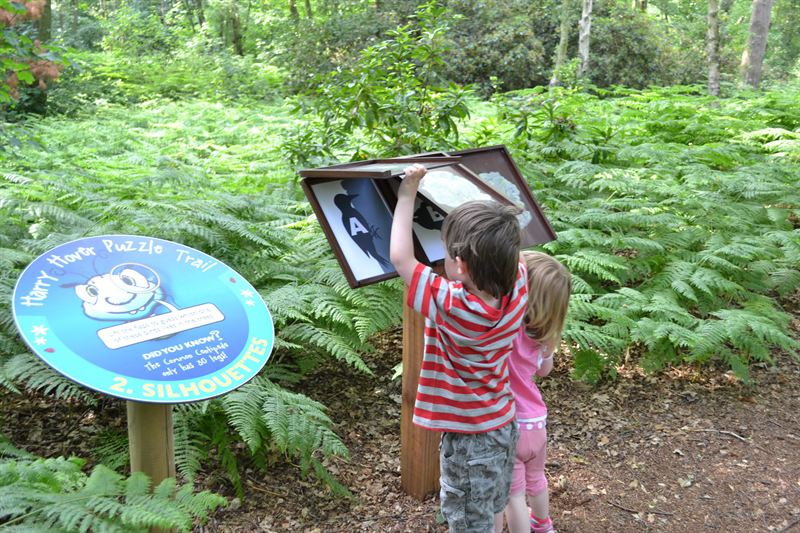I discovered the website,
http://www.smashingmagazine.com and was intrigued by their section
"Street and Wayfinding Signs". They presented wayfinding signs sent in to the World of Signage Photo Contest. These photos have been taken from around the globe, something which interested me greatly. I wanted to find out if there were similarities between the wayfinding systems from so many different countries or witness unusual approaches I had never seen - or thought of - before.
Vermont
The information alongside this photograph (from Ahmet Zehir from the USA) reads, "I
headed to Vermont for a weekend with bunch of friends couple of weeks
ago. These arrows were on a tree that we stumbled upon while we were
trailing. I loved the juxtaposition of the vastness of the forest
and the vague directions that these arrows were pointing."
I took particular interest in this photo for it was wayfinding for a woodland trail, something that I may be focusing my project on in the future. The simplicity of this sign is obvious: an arrow on diamond-shaped sign, nothing more. Though thought has been placed into colour: the orange/yellow stands out amidst the surrounding browns and greens.
Manufaktura, Poland
This photograph was taken by Wojciech Jachowicz, from Poland, of guideposts in a shopping centre's square. This example of wayfinding immediately caught my attention as I was scrolling down the page, simply because it looks so unique and unusual to me. In England, I don't think I have seen a similar sign, were it is just one block of colour, the design not differencing in width throughout. They are very attractive signs, however, with their warm colouring and subtle blends of patterns. I think that they would be easy to understand too, for they display clear text and the adjoining arrows make sure you know which direction to head in.
The Netherlands
Well, this is certainly one way to do things. The wayfinding instructions have been written on rocks. The information is clear, certainly, pointing you in the right direction with the use of pictograms. However, it is only useful if you are able to spot these rocks! Some people may walk right past them; we are trained to spot wayfinding systems from their clear appearance, their use of contrasting colours and their bold, attention-grabbing image. Obviously, if you started using rocks to convey wayfinding information, people will get lost much more oftern, yet this photograph is still fun to view.
The photo was taken by Pim van den Berg who says, "This sign is placed along a hiking route. I can imagine the residents
of the farm to the right (prive means private in dutch) got a bit
annoyed of having people wander about their house all the time. Their
solution is very elegant design-wise in my opinion."
This photograph was taken outside Jumeirah Beach Residence (JBR) by Anas Marwan. They explain, "In
JBR each block of buildings signage has a unique signage design, and
each design consists of two elements: colour and symbol. Were violet
represents Seashells (Sadaf in arabic), red represents Coral (Murjan),
Blue for Sea (Bahar) and Orange for Sands (Rimal)."
This is an interesting technique to put in place and the warm, exotic colours themselves are reminiscent of the Dubai culture. The sign is large and bold, with little information present, perhaps so that the signage is not cluttered with text and therefore more troublesome to read. The large arrows point the viewer in the correct direction.
This photo was taken from a sign in Sa'dabad Palace, in north of Terhran, taken by Arash Haji Vaziri. The Sa'dabad Palace is currently the official residence of the President of Iran, while parts of the Palace compound are museums, in which visitors can roam through and look at the rich history of the country.
The intricate cut-outs of the sign showed to me immediately that the area was rich and important. The delicate pattern of the sign alerted me that this was a classy area. Perhaps this is because a certain effort has gone into the wayfinding design, to make it appear unique, while extra money has been splashed cutting out the pattern from the metal. I think the mossy-green colour of the sign may take away from this somewhat, however, and it is unlikely to stand out, especially since green foliage seems to be its surroundings. The typeface used is simplistic, a serif font, which is more unusual to be seen on wayfinding signs, which prefer sans-serif.
The website says of this photograph, "Mountain Distance Indicator in Bandarban, Bangladesh. Created by Md. Akhlas Uddin." As I scrolled through pages of different wayfinding, I was surprised to see a number of signs, such as this one, had a handmade touch. The text for this sign seems to have been painted on using white paint, giving it a rough appearance. To me, the sign does not appear very professional, yet it also holds a certain charm. I wish I knew more about it, for I would like to know if a sencil was used, as, with the English lettering, there seems to be a clear typeface being put into use.
This sign points to a boat rental service in Hallstatt, Austria and the photo was taken by Dieter Veverka. This is certainly a creative approach to a sign, for it has been turned into a sailor. His hand points the viewer in the correct the direction, his pointing finger replacing the well-used arrow typical to wayfinding signage. Though the text is in a different language for me, I would be able to understand this sign regardless. The theme of the sign is clear: this man is a sailor. The colours, the anchor on his arm and even his hat tells me this. However, there is something about his hollow eyes and gaping mouth that scares me a little bit...
California
This photo was taken of the California Science Center by Enrico Santana. A colour system seems to be in place here, which is very interesting to see. I would like to know which colours represent what, however. A colour system is successful when there are many points to the sign, such as in the photograph above. If you know what colour to look for, you can narrow in on those signs, rather than having to look through all the signs to find the one you want. I think that this photograph demonstrates the type of wayfinding signs I am most used to seeing in England: the traditional pointed rectangular shape and a well-used sans-serif typeface. It is elegant, professional, while the colouring gives it a more light-hearted appearance.
Egypt
This photograph, taken by Kristina Ivandic, shows the signage for the Valley of the Kings in Egypt. The rusted appearance and sun-kissed colouring of the sign looks to be at home in a hot, dry place. As soon as I looked at the sign, in fact, I thought that it was signage designed for a desert, or somewhere just as hot. I was also interested to see stencils being put in use for the typeface. The black colouring of the letters, as well as the black border, makes the sign stand out. It could have been overlooked due to its camouflaged background colour, so this was a smart move that makes the sign appear more striking. This wayfinding sign is simple and bold, making it easy to read and discover.
New York
The photo was taken by Tracey L. Warner and shows a directional sign located in Battery Park, New York, USA. The tyepface put into use is actually reminiscent of one used
throughout my university. Perhaps this is what drew me to this sign. It is an unusual choice of typeface to be used for a wayfinding sign, as it is a serif font and too much of it could also appear a little cluttered. However, it is easy to read and stands out here. I found it interesting that the more important information ("Statue of Liberty", "Ellis Island") was presented in a much larger typeface. Perhaps these are the locations that most people are looking for and so the large typeface alerts them more quickly to this destination. Pictograms have also been put into use here, showing clearly where food and drink and the toilets are located. Now that I look back on the other signs from different countries, I see that few of them have used pictograms, which has actually surprised me.
Ending Thoughts
It was interesting to see different examples of how countries approach wayfinding systems. I think that I was blinkered when it came to this, as I was so used to seeing English Wayfinding signage. This research was therefore an eyeopener.
- It was also good to consider how signs can be made to be understood for those who cannot read the language present on the sign. Pictograms can be enforced, or the sign could be given the appearance of the destination it is pointing to.
- Every sign that I looked at incorporated an arrow into their design, pointing to the destination it described. This makes it a lot easier for everyone to understand where they should be heading.
-Most of these signs are also designed for adults and may be unclear to children, perhaps with the exception of the Austria one.
References:

















